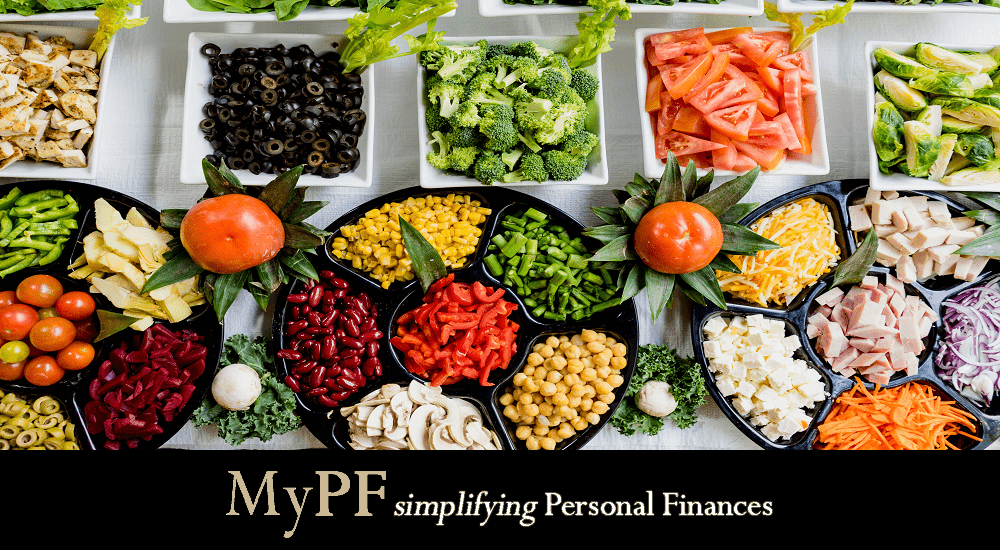What is happening to the economy now? How will it impact you?
With the rollout of the vaccine for Malaysia, there is a burning question in everyone’s mind on whether the economy is going to recover now. The times of going and enjoying a night out might not be that far behind when the Malaysian population is adequately vaccinated.
The Department of Statistics Malaysia and Bank Negara Malaysia recently released the Gross Domestic Product (GDP) results for the second quarter of 2021, and the economy does seem like it’s recovering. This article will use data from the Department of Statistics Malaysia mainly to detail what you should understand about the economy.
Read more below on what the economy means now for you!
Contents
#1: The Economy’s Growth Was High But Due to Low Base Effects
The Malaysian economy grew at a whopping 16.1% in the 2nd quarter of 2021; the highest it has ever been in more than a decade in Malaysia. For context, before the pandemic, the economy grew at just an average of 4.9% from 2016 to 2019.
This indicates good news for the Malaysian economy considering that it went through a decline of 5.6% in 2020 due to the pandemic and is the first time growth was positive in over a year. The recovery could be picking up speed now and this augurs well for everyone.
However, you need to note that growth was strong due to the low base in the 2nd quarter of 2020. This is called low base effects in the industry. The 16.1% growth rate was obtained by dividing 2nd quarter 2021 GDP with 1st quarter 2021 GDP.
(2Q 2021 GDP / 2Q 2020 GDP) – 1 = (RM336bn / RM290bn) – 1 = 16.1%
The 2nd quarter of 2020 growth was actually the lowest in more than a decade also, registering a decline of 17.2%. You need to understand that the Malaysian economy is recovering but don’t be fooled by the 16.1% growth. It still hasn’t recovered to what it was before as the 2nd quarter of 2019 generated RM350bn in GDP compared to RM336bn currently.
#2: The Construction Sector Had the Highest Growth But It Was the Hardest Hit Also Previously
Among the economic sectors in Malaysia, the construction sector registered the highest growth at 40.3%. Before the pandemic, the sector was growing at an average of 4.7% from 2016 to 2019 but was already suffering from a weak property and construction market as it grew at 0.4% only in 2019.
The civil engineering segment (building of highways, roads, public transportation, and other infrastructure projects) did the best in the construction sector, growing at 50.0%. Progress of large transportation projects such as MRT2, LRT3, and the Pan Borneo Highway was disrupted during the pandemic but are now picking up pace.
The commercial and residential property market grew at 34.8% and 16.3% respectively, which should be good news to some of you still waiting for the completion of the properties you bought.
However, this needs to be contextualised by the fact that the construction sector was the hardest hit also during the pandemic. In 2020, construction’s growth was the lowest among all sectors with a decline of 19.4%. In the second quarter of 2020, the sector lost almost half of its GDP, declining by 44.5%.
#3: Services and Manufacturing Sectors Were Key Drivers of the Recovery
The Services and Manufacturing sectors grew at 13.4% and 26.6% respectively. Both sectors make up almost 81% of the whole economy, making them the key contributors to the recovery.
The services sector is the biggest in Malaysia among all the other sectors with key segments such as:
- Retail trade: Retail shops selling goods to consumers
- Wholesale trade: Resellers that buy from the main producers and sell to retail shops
- Information and communication: IT, mobile, internet, and entertainment services mainly
- Finance: Financial and banking services that do not include insurance services
- Government: Government services to people such as police, military, immigration, and others.
Among the key services segments, finance grew the strongest at 28.2%, followed by retail trade (+21.4%), wholesale trade (+19.4%), information and communication (+5.9%), and finally, government services (+5.5%).
The manufacturing sector is the second biggest in Malaysia with key segments such as:
- Electrical and electronic: Produces electronic and electrical components, boards, and equipment.
- Refined Petroleum: Produces petroleum products
- Chemicals: Produces chemical and pharmaceutical products
- Motor vehicles and transport equipment: Produces cars, lorries, and other transportation equipment.
Among the key manufacturing segments, motor vehicles and transport equipment grew the strongest at 41.3%, followed by refined petroleum (+34.0%), electrical and electronics (26.0% – 28.0%), and finally chemical production (+15.8%).
If you are working in one of these key segments, expect that business will be recovering which could, in turn, increase your profits or salaries.
#4: Prices Are Going Back Up
With the economy showing signs of recovery, you should be wary that prices are also going back up. The consumer price index which measures the prices of things consumers buy, grew by 4.1% in the second quarter of 2021, making this one of the strongest growth since 2017.
This was actually driven by transportation prices growing at a ridiculous 23.0%. This should be contextualised by the fact that transportation prices crashed the most too in the second quarter of 2020 by a decline of 18.8%. The strong growth here was mainly attributed to increasing RON95 and RON97 prices as global oil prices increased and that more people were driving around.
Other than that, Housing, Water, Electricity, Gas and Other Fuels prices grew at 3.2% driven mostly by electricity, gas and other fuels. The electricity discount was terminated under the PRIHATIN program that was in effect from Apr 2020 to Dec 2020. However, the government has recently also reintroduced the electricity discounts under the PEMULIH package in July 2021.
The price of food and non-alcoholic beverages remained stable, growing at 1.6% in the second quarter of 2021, a slight increase from the first quarter of 1.5%. Hence, for now, there isn’t much to worry about prices of food and beverages. Do note that this only includes groceries prices and not the prices of food from restaurants.
#5: Malaysians Are Still Having Difficulty Finding Jobs
The unemployment rate which measures how many people who want to find jobs but are unemployed, is still at 4.8%. This is the third consecutive quarter where the unemployment rate has not improved. While this is lower than the peak unemployment rate of 5.1% in the second quarter of 2020, this is certainly concerning as it means that the job market is not recovering in line with the economy.
There is a particularly concerning trend here. The unemployment rate for people ages 25 to 34 has increased sharply from 4.3% in the first quarter of 2021 to 5.0% in the second quarter of 2021. This means that more young working people are actually unemployed right now.
For people between ages 35 to 44, the unemployment rate actually decreased sharply from 2.6% in the first quarter to 1.9% in the second quarter. Most of these people are likely to fill more senior positions and indicates that companies have a preference to hiring people with more experience at this juncture of the economy.
#6: The Economy Is Still Expected to Recover But Impacted by Higher Covid-19 Cases
The Malaysian economy is still expected to recover this year but it is probably not as strong as what people expected at the beginning of 2021. Most organisations still project that Malaysia’s growth will be positive in 2021, but they are less optimistic than before due to the increasing Covid-19 cases.
- World Bank: Reduce 2021 growth projection from 6.0% to 4.5%.
- Fitch: Reduce 2021 growth projection from 4.9% to 0.0%
- Malaysian Government: Possibility to cut growth from 6.0% – 7.5% to 4.0%.
What does this mean for you? Things are still going to get better, but it is going to be slower. The economic recovery theoretically should increase revenue and profits for companies, which in turn increases your salary. However, expect that increase in your salary to be lower and slower as companies will take a longer time to recover.
Conclusion
The economy does seem to be recovering based on the data for the second quarter of 2021. GDP growth is strong, but this needs to be contextualised by the fact that the economy is still not back to the situation before the pandemic. Beware of prices that are increasing now and the difficult job market. The economy will recover but the big question is how fast will it be.
What do you think about the economy now? Let us know in the comments below!











Leave A Comment